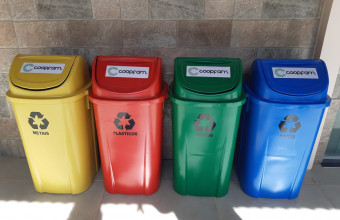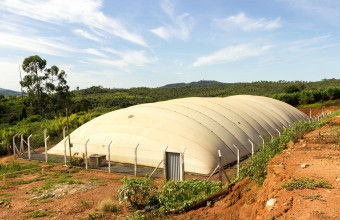The search for clean water and sanitation is a global priority, reflected in the Sustainable Development Goal (SDG) number 6. It is also a priority for Cresol Minas Gerais, in support of sustainable development in local communities.
In partnership with the Union of Family Agriculture Workers of Espera Feliz, in the Brazilian state of Minas Gerais, the cooperative led the Springs Recovery and Revitalization Project in the rural area of the municipality, which started in November 2021 and lasted until May 2022. The partnership with the Union was established through a call launched by Cresol Minas Gerais.
“The Union is an important partner for rural families in the municipality, so Cresol realized that through the partnership, it would be possible to benefit the families in the region by working on the maintenance of their clean water supply,” says Mayá Patrícia Polo, Relationship Analyst at Cresol Instituto.
In addition to the Union, the initiative received support from other public and private entities, such as the local Department of Agriculture, Coofeliz, Fetraf MG, Caparaó Jr, Rádio Café FM, Centrão Materiais de Construção, ASEAF Association, Constrular Materiais de Construção, and Agrotec Consultoria.

Protecting springs
The Springs Recovery and Revitalization Project in Espera Feliz received significant support from the local community. The properties selected to be part of the project were indicated by the Union and evaluated by Cresol Minas Gerais.
In total, the project served 21 properties of family farmers from the communities of the Itabapoana River Basin. “This initiative directly helped over 100 families, providing them with safer and more reliable access to clean water,” Mayá Patrícia Polo says.
The springs play a crucial environmental role, supplying water for local consumption, replenishing rivers and lakes, and serving as a source of life for a variety of organisms that are essential to the functioning of ecological ecosystems – including the fauna and flora of the surroundings.

Ecosystem
A healthy environmental ecosystem improves conditions for sustainable family agriculture, benefiting local producers.
To ensure that the springs remain healthy, it is important to protect them, avoiding contamination with waste, sewage, and other polluting elements. Moreover, treating a polluted spring is much more expensive than protecting its integrity before contamination.
This happens because there is a close relationship between environmental preservation and water availability. The most accepted thesis suggests that preserved forests, woods, and environments play a role in maintaining a constant supply of good-quality water, according to the report “Nascentes do Brasil: Estratégias para a Proteção de Cabeceiras em Bacias Hidrográficas” (translated as “Springs of Brazil: Strategies for the Protection of Headwaters in Watersheds”), produced by WWF Brasil.
It is worth noting that the recovery and revitalization of springs through the planting of riparian forests also contribute to increasing the carbon stock in these areas, thus serving as an important tool for achieving carbon neutrality in these locations.
To sum up, the Springs Recovery and Revitalization Project is a way for Cresol Minas Gerais to support environmental preservation and sustainable development in local communities.





